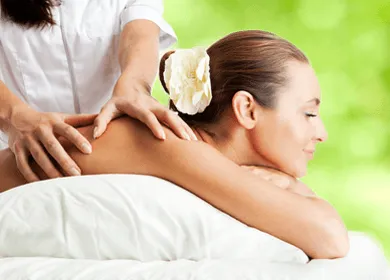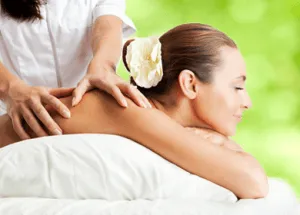
- Share on Facebook108
- Share on Pinterest
- Share on Twitter
Massage has been used therapeutically for thousands of years but has only recently received a nod from American health professionals in terms of its medicinal value. Once reserved as a luxury for the well-to-do, massage is now an integral part of many rehabilitation and healing regimes. The therapeutic value of massage is well documented in research, and there are numerous ways to incorporate different types of massage into your healthy living plan.
What is Massage?
Massage refers to the rubbing or manipulating of the skin, tendons, ligaments and muscles. Trained therapists use their hands and fingers to massage and can even use other parts of their body such as elbows, forearms or even feet. Depending on the technique and reason for application, massage pressure may be exceptionally light or extremely heavy.
Types of Massage
Swedish Massage: This very gentle form of massage employs long strokes, and deep circulation movements. Swedish massage techniques help improve lymph system functioning which if vital to the transportation of nutrient-rich fluids. Because Swedish massage also helps the body with effective toxin removal, muscle strains and sprains may heal faster. Techniques used also help to improve the elasticity of tissues and increase flexibility which helps tremendously with joint pain. Of course, another great benefit of Swedish massage is that it relaxes the entire body. We live in a highly stressed culture and often don’t realize just how much stress has accumulated in the body. This stress is often the root of many serious health conditions. Many people who suffer from anxiety, depression and insomnia find that weekly massage sessions help them to cope better.
Sports Massage: Used mainly as an injury prevention and rehabilitation tool, sports massage is generally reserved for athletes or those engaged in athletic pursuits. The techniques employed are similar to Swedish massage and may be geared towards particular ligaments and muscles that are used in specific sports. College and professional athletic teams usually have a few sports massage therapists on staff. Because techniques help loosen ligaments and increase flexibility, use of sports massage can reduce the incidence of injury.
 Deep Tissue Massage: Unlike Swedish massage, the techniques used in deep massage are slow and forceful. Geared at targeting deep layers of muscle and connective tissue, this type of massage is often used in injury rehabilitation. Rubbing reduces inflammation and helps to break up scar tissue that is formed within the body. A buildup of scar tissue can often cause chronic and debilitating pain. Therapists report that deep tissue massage moves toxins out of the body and releases deep knots in connective tissue and muscles. Natural pain killers such as serotonin and endorphins are released during the massage. In addition, once tissue is loosened, many people find it easier to achieve excellent posture and their balance improves. Deep tissue techniques are also useful for improving flexibility in muscles and joints.
Deep Tissue Massage: Unlike Swedish massage, the techniques used in deep massage are slow and forceful. Geared at targeting deep layers of muscle and connective tissue, this type of massage is often used in injury rehabilitation. Rubbing reduces inflammation and helps to break up scar tissue that is formed within the body. A buildup of scar tissue can often cause chronic and debilitating pain. Therapists report that deep tissue massage moves toxins out of the body and releases deep knots in connective tissue and muscles. Natural pain killers such as serotonin and endorphins are released during the massage. In addition, once tissue is loosened, many people find it easier to achieve excellent posture and their balance improves. Deep tissue techniques are also useful for improving flexibility in muscles and joints.
Hot Stone Massage: Besides melting away tension, hot stone massage eases muscle stiffness and increases both circulation and metabolism. Direct heat from the stones relaxes muscles and allows therapists to reach deeper layers of muscle. Blood vessels are expanded which improves circulation throughout the body. Many people who suffer from chronic pain associated with such conditions as arthritis, fibromyalgia, and chronic fatigue, find relief through hot stone massage. Hot stone therapy also decreases muscle spasms due to its relaxing effect.
If you need a gift for someone you love, consider giving them the healing gift of massage.
When was your last massage?
-The Alternative Daily
- Share on Facebook108
- Share on Pinterest
- Share on Twitter

